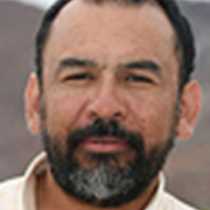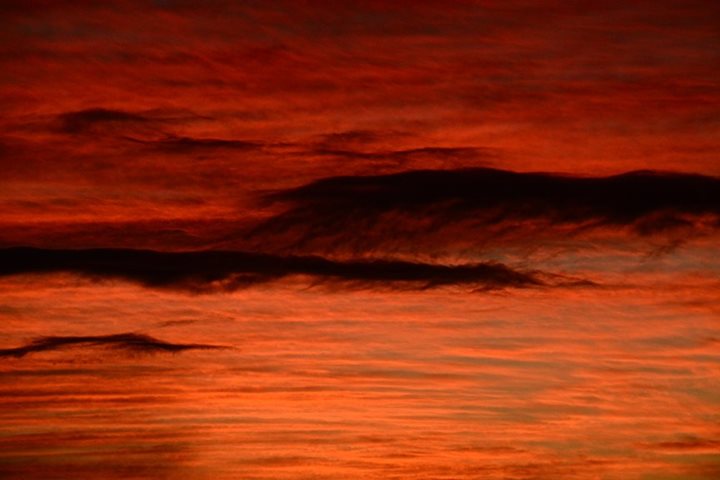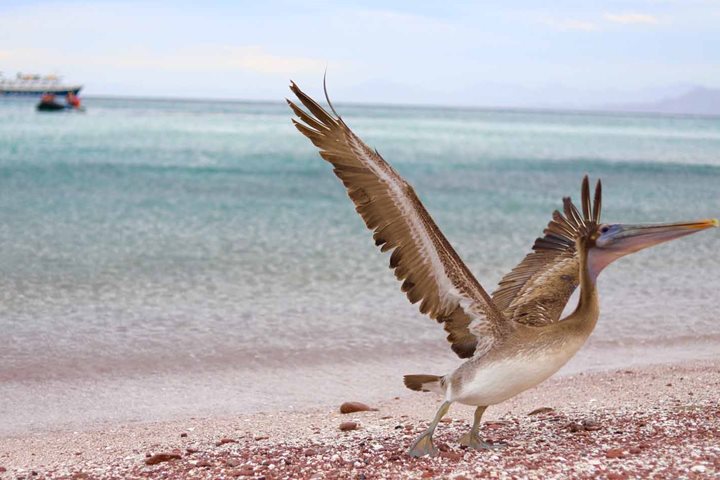This day was full of activities right after the surnrise. We woke up and admired the beautiful red and orange volcanic rocks of Espíritu Santo island as we approached it from La Paz Bay. The atmosphere was clean and transparent precluding a hot sunny day. The ocean was quiet and a light breeze blew from the north. After breakfast, Harumi Fujita gave us an interesting talk on the archaelogical sites in the southern tip of the island, specially at the locality known as Covacha Babísuri (translated as“the ring-tailed cat little place to hide”), where we later visited.
The place is a small cave in the Ensenada de la Dispensa where Harumi and her team of archaeologists recovered human remains and artifacts dated from 12,000 years ago to the time of the arrival of the Conquistadores. The collection included two enigmatic tools: knifes made of iron, but not of European origin. Besides the archaeological excursions, we walked with Jon Rebman, the reputed botanist from the San Diego Natural History Museum, to discover the amazing plants of the insular Sonoran Desert. Later, right from the rocky beach, our expedition landing craft took guests and naturalists directly to the nearby Bahía San Gabriel to observe a colony of frigatebirds. On the approach, the cliffs of Espíritu Santo uncovered their beauty through the plants that live on the vertical walls, like the wild or Palmer´s fig, galloping cacti, and some members of the composite family.
The colony of frigatebirds was busy in the reproductive bussiness: the females were sitting on the nests whilst the brave males worked endlessly bringing down plant material to their mates to complete the building of the nest, right on top of the mangrove community. Some males had the red gular pouch still inflated, indicating that they were trying to attract females. Many immature individuals were perched next to the reproductive pairs, learning the lessons and menacing each other. Some patches of the mangroves were damaged due to the excess of guano. Yellow-footed gulls and white ibises were also seen close to the frigatebirds. Once our happy parties made it back to the National Geographic Sea Bird, a deserved lunch was served, and two presentations followed it: one by Dr. Bill Gilly, about the layer of minimum oxygen content in the Gulf of California, El Niño climatic phenomenon, and the Humboldt squid. The second talk was by Susan Shillinglaw on John Steinbeck, Edward Rickets, and their famous journey to the Sea of Cortez.
In the afternoon the ship moved down to one of the most beautiful beaches in the gulf: Bahía Bonanza, in the southeastern side of Espíritu Santo. We kayaked and snorkeled in the shallow bay and walked on the white sandy beach. These activities were followed by a delightful dinner on the beach and a bonfire. Sunset painted the sky a vibrant red giving us a sense of a timeless existence in this land.







